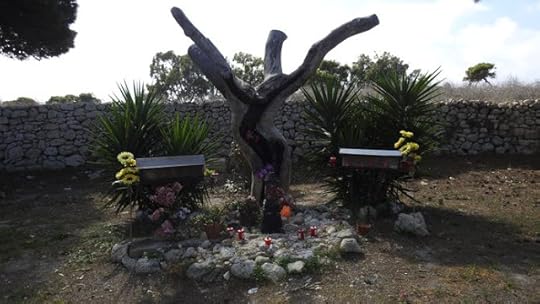Clancy Tucker's Blog, page 19
May 4, 2022
28 June 2022 - THE MYSTERIOUS BOOKSHOP in MANHATTAN
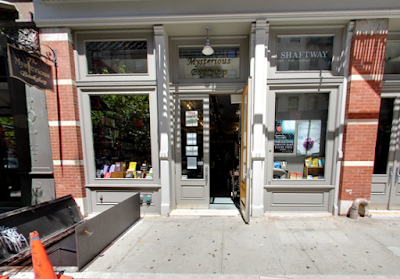
THE MYSTERIOUS
BOOKSHOP in MANHATTAN
G'day folks,
The world’s oldest and biggest bookstore stocking only mystery, crime fiction, espionage, and thrillers.Mysteries have always been around and always been popular, but they haven’t always been respected. Otto Penzler has had a significant hand in that transformation. He’s probably the most important figure in the history of mystery fiction who’s never written a mystery story.
You get into Otto Penzler’s New York office through a door in the Mysterious Bookshop, the world’s oldest and biggest bookstore focusing on mystery, crime fiction, espionage, and thrillers. The door is roped off with a big X made of yellow police tape reading CRIME SCENE DO NOT CROSS. Down a flight of stairs, his office is a low-ceilinged basement cube with floor-to-ceiling bookshelves on all four sides, stocked with anthologies and first editions as well as a random sampling of mass-market hardcovers and paperbacks. If the office was a store by itself, it would be the second-best mystery bookstore in the world.
Penzler is the owner of the Mysterious Bookshop (founded 1979) as well as The Mysterious Press, a publishing imprint he founded in 1975, and mysteriouspress.com, his ebook publisher. He has published most of the greats of mystery and crime fiction: Raymond Chandler, James M. Cain, James Ellroy, Ross Thomas, Patricia Highsmith, Ross Macdonald, Ed McBain. Any of the major authors he hasn’t published are probably at least good friends of his.

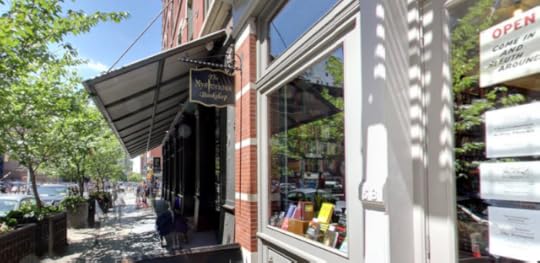
The Mysterious Bookshop itself. Today the store is down in Tribeca, on a block that doesn’t suggest anything important in the literary world. It’s next to a Le Pain Quotidien and a few doors down from a 7-Eleven. (It was first located on 56th Street in Manhattan, in a building Penzler owned because it was cheaper to buy—New York was different back then.)


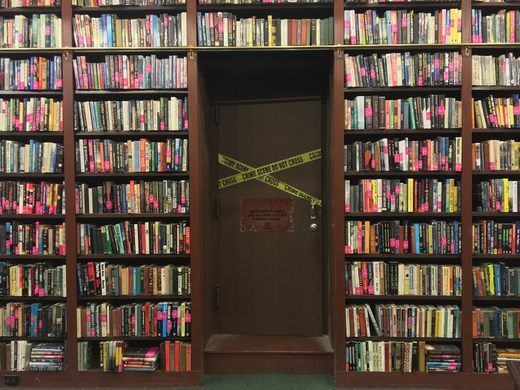
Inside, every square inch of walls leading up to what must be 20-foot ceilings are packed with any book in which someone violently dies. There is an entire section for Sherlock Holmes books, including the many spinoffs written by dozens of authors. There are copies of long-defunct detective magazines like Black Mask. There is an entire section for what Penzler calls bibliomysteries—mystery books involving mysterious books. Murdered librarians, valuable manuscripts, that kind of thing.
The bookstore is not twee. There are no props, aside from the caution tape; no pranks, no cute designs or artworks. This is a temple to the noble mystery, a place where people who can name all of Donald E. Westlake’s pseudonyms talk about one of the most enduring genres in the history of literature.

30 June 2022 - TUNNEL NUMBER 3 - MANHATTAN, NEW YORK
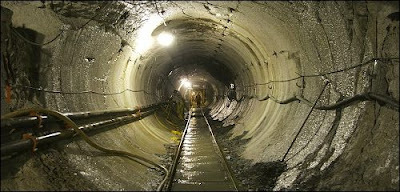
TUNNEL NUMBER 3
- MANHATTAN, NEW YORK -
G'day folks,
Deep under Manhattan is the largest construction project in city history. So far, the project has taken the lives of 23 workers, or "a man a mile."The state of New York began digging this tunnel in 1970 to provide water to the city from its upstate source.
When completed, the tunnel will be over 60 miles long, snaking across the city from Yonkers across Central Park, the East River and Roosevelt Island and ending up in Astoria, Queens.
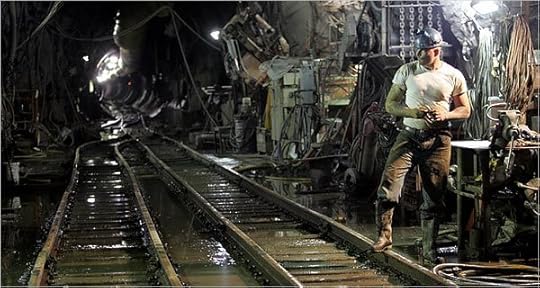
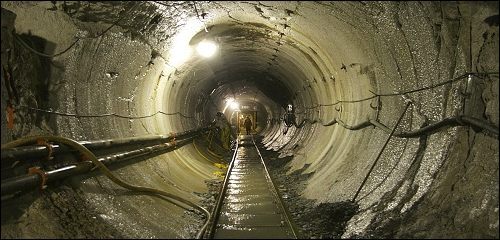
The construction project costed over $6 billion and was not finished until 2020. The costs for the ambitious project have already been high with 23 workers losing their lives to the tunnel, averaging about one life each mile.
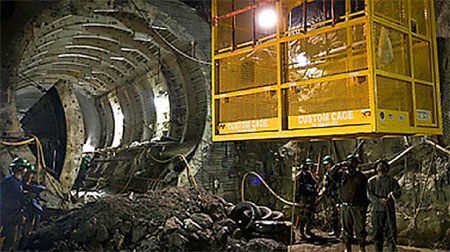

May 3, 2022
23 June 2022 - BURKE GHOST TOWN - IDAHO, USA
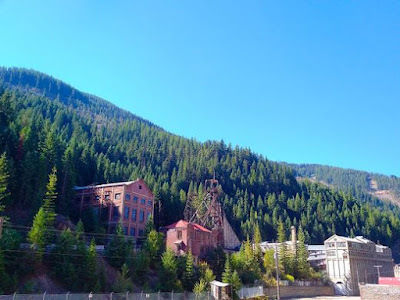
BURKE GHOST TOWN
- IDAHO, USA -
G'day folks,
A mining town, now abandoned, was built in a canyon so narrow that the railroad ran right through the hotel lobby.Burke, Idaho, is not your run-of-the-mill ghost town. Its story starts out familiar: The mining town rose up after rich deposits of silver and lead were discovered in 1884. But the boomtown that developed was situated in a comically narrow canyon, resulting in some wonderfully creative architecture.
Burke Canyon is long and thin, only 300 feet wide at its narrowest point. It’s a seemingly impossible space to fit a whole town into, and yet they did. The train tracks and the road for vehicles both shared the main street, so cars and carriages had to pull over when the train rolled by. Stranger still, the railroad was built right through the lobby of the town’s hotel.
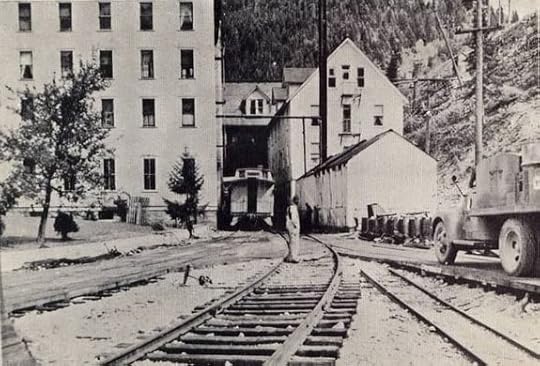
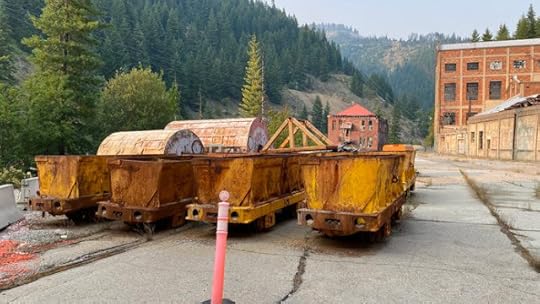

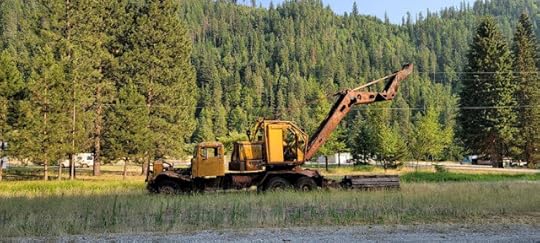
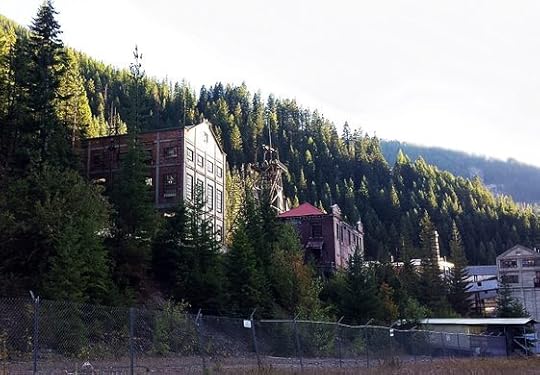
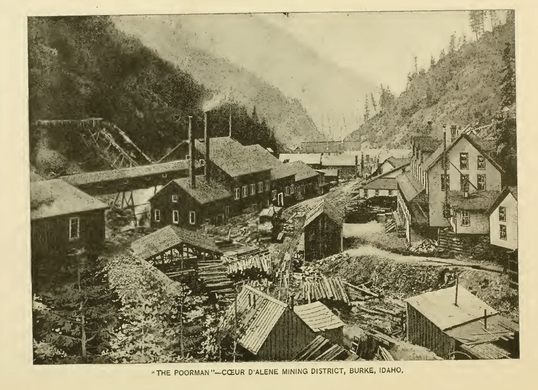
The Tiger Hotel was built in 1896, straddling the main street and the creek that ran through the canyon. When the railroad expanded in 1906, the lack of space forced it to run right through the hotel. A covered walkway crossed over the tracks connecting the two sides of the building, and five cars of the Northern Pacific Railroad passed through the tunnel in the hotel each day.
Like so many mining towns in the Old West, Burke began to decline at the beginning of the 20th century and the mines starting shutting down. By 1990 there were reportedly just 15 residents left in town. The last of the mines closed in 1991, and within a few years, there was no one left in Burke.
Some of the old buildings have been destroyed by fire, floods, or time, including the unusual Tiger Hotel, which shuttered in 1954. But the decaying remains of many of structures, deserted mining equipment, and abandoned artifacts can still be seen around town. A twisted railroad track, strewn with old massive tools, runs through the town, and there is an unmarked, unknown cemetery with most of the headstones destroyed. You can also see the remnants of the town’s unique architecture, such as the cave-like holes carved into the side of the hills where the former residents of this unlikely village built their houses.

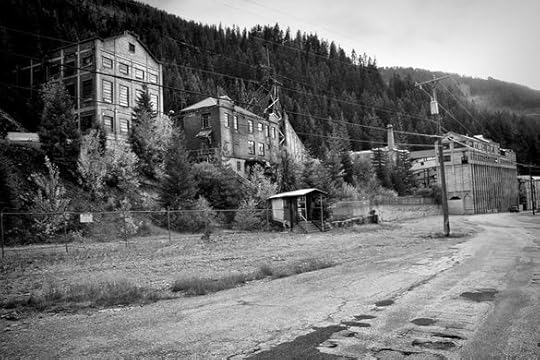
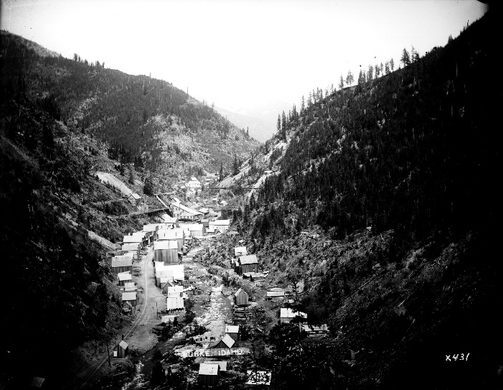
22 June 2022 - ANCIENT AQUEDUCT IN ITALY
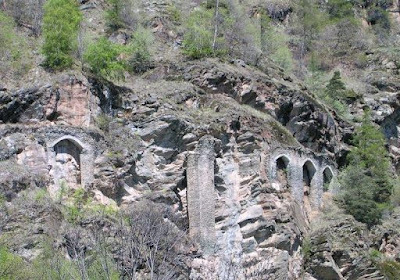
ANCIENT AQUEDUCT
IN ITALY
G'day folks,
For centuries this cliffside aqueduct was believed to be of Roman origin, but it actually dates to the medieval era.Far in the northwest corner of Italy, in the town of Antey-Saint-André, an ancient, little-known aqueduct hugs the hillside. Dating back to the ninth century, the medieval aqueduct, known as Ru Du Pan Perdu, was originally built as an irrigation canal. The structure would collect water falling from mountainside streams and funnel it to the agricultural land below. The name Ru Du Pan Perdu literally means “channels of lost bread” and indicates that the laborers who built the aqueduct were likely never paid for their work and therefore did not complete the project.
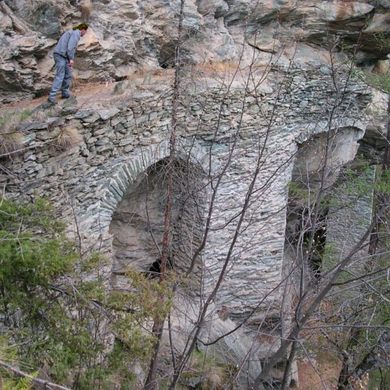
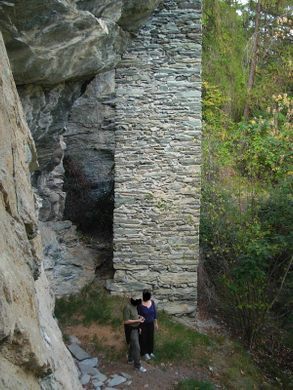
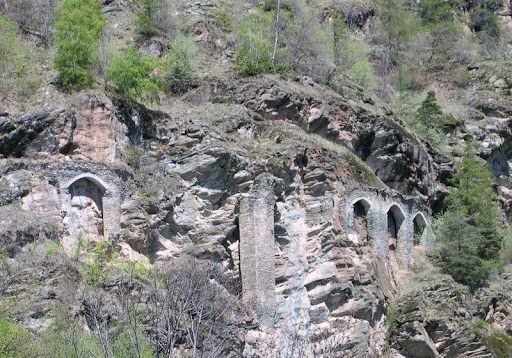
The site became a popular spot on the European “Grand Tour.” From the 17th to the mid-19th centuries, European wealthy young people would embark on these Grand Tours across Europe and the Middle East, often spending months or even years away. One such tourist, Edward Whymper, who climbed the Matterhorn in 1865, wrote about seeing the aqueduct in his diary: “One sees from the path, at several places on the right bank of the valley, groups of arches which have been built high against the faces of the cliffs.”
At the time, almost everyone thought these impressive arches were Roman, not medieval. Guide books of the era repeated the falsehood. But Whymper correctly guessed the aqueduct was a later construction. He wrote, “the work has not the usual Roman solidity. The arches have always seemed to me to be the remains of an unfinished work.”
Today, the aqueduct is visited far less frequently than in the 19th-century. But for those willing to make the trek, the structure also offers stunning views of the surrounding Alps.

21 June 2022 - ANCIENT FOOTPRINTS FOUND in TANZANIA
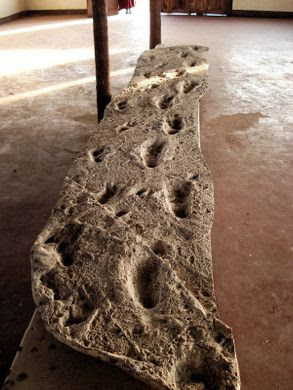
ANCIENT FOOTPRINTS
FOUND in TANZANIA
G'day folks,
Human ancestor’s 3.6 million year-old footprints found in Tanzania.Roughly 3.6 millions years ago the Sadiman Volcano erupted covering the surrounding ground in ash; rain soon followed making a soft and muddy ground over which prehistoric animals trekked. More ash then erupted from the volcano covering and, in effect, preserving the prehistoric tracks.
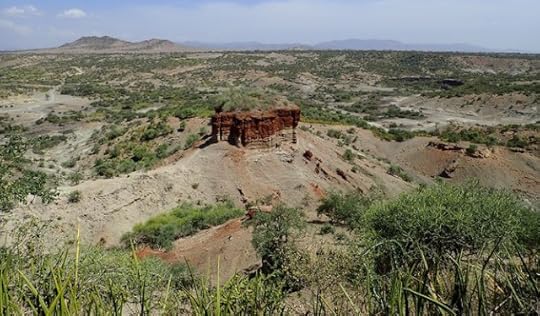
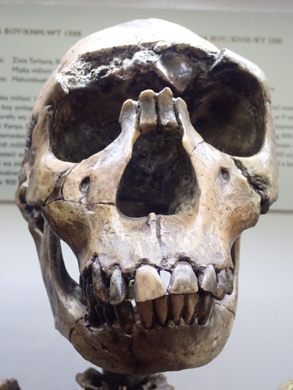
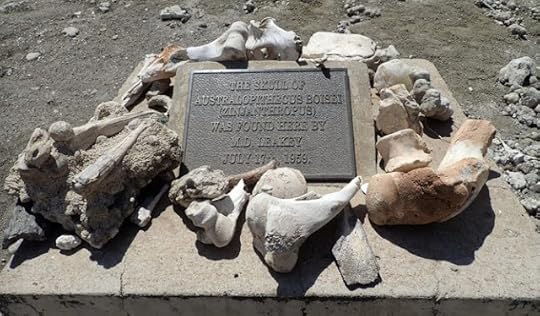
Forward to 1978, when a group of researchers (led by paleoanthropologist Mary Leakey) discovered the preserved tracks, within which were the oldest known footprints of human ancestors. From the prehistoric footprint’s shape, length, and toes it was evident that these hominids were bipedal and were walking upright on two legs, before even the use of stone tools. The prints were left by two or three hominids (one or two adults and a child) and show that these early humans walked in a very similar manner as modern humans.
Today, the actual footprints have been covered up in hopes of protecting them, but due to fear of erosion they are planned to be uncovered again. Whether the prints remain at their discovered location (with a possible museum built over them) or are to be cut-out and moved entirely is currently under debate.
For now visitors can visit the covered up site of discovery and the nearby Olduvai Gorge Museum, which features casts of the prints and related artifacts.
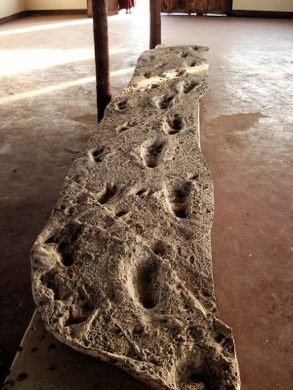
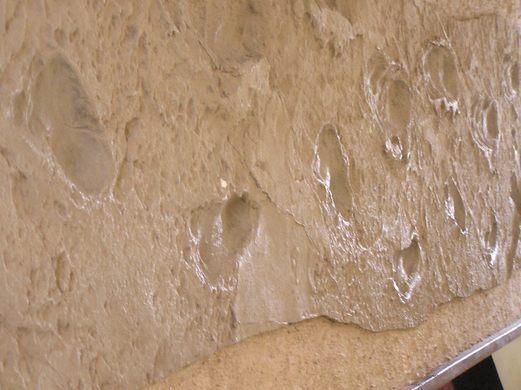
May 2, 2022
27 June 2022 - LAKE NATRON - TANZANIA
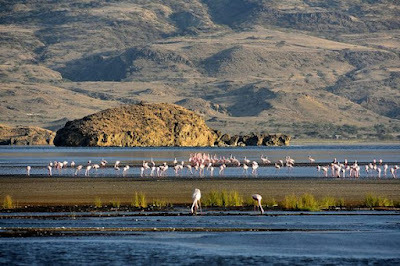
LAKE NATRON
- TANZANIA -
G'day folks,
A salty red wasteland in Tanzania is a breeding spot for endangered flamingos.Don’t let the ring of salty marshes along the edge of Lake Natron fool you. This body of water is one of the most inhospitable areas on Earth.
Colored a deep red from salt-loving organisms and algae, the lake reaches hellish temperatures and is nearly as basic as ammonia. Although most human settlements throughout history have formed around lakes and rivers, the barren landscape around Lake Natron tells a clear story of a place no one ever wanted to live.
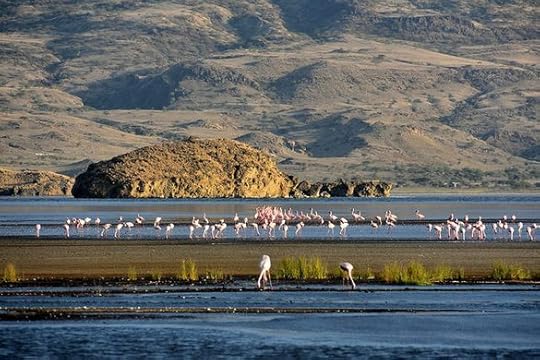
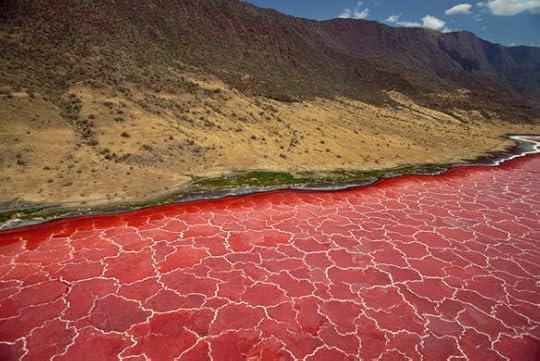
Africa’s Great Rift Valley is known for some of its environmentally extreme regions such as the Erta Ale and Dallol. The saline environment of Lake Natron certainly qualifies. Water is supposed to give life, yet this salty world seems content to make life almost impossible… almost.
Although most species cannot handle the 120-degree lake water, cyanobacteria have made Natron their home and turned the lake its trademark reds and oranges. This algae growth has also fostered the developments of Lesser Flamingo nests. Amazingly, 2.5 million flamingos make Lake Natron their home and it is considered one of their only breeding grounds, making preservation of the lake an environmental concern.
In fact, bringing in fresh water would greatly upset the ecological balance of the lake and many in Tanzania have actively fought against bringing in water from the Ewaso Ng’iro River. If the salinity of the lake decreases, the cyanobacteria will also decrease and cause a loss of habitat for the endangered flamingos. Besides losing a bird habitat, the world would also lose a beautiful and salty natural wonder if too much water is diverted south to Natron.
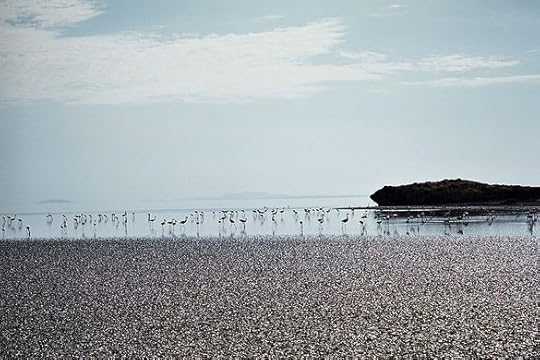

May 1, 2022
26 June 2022 - 'DEAD VLEI' - A DEAD MARSH IN NAMIBIA

'DEAD VLEI'
- A DEAD MARSH IN NAMIBIA -
G'day folks,
This "dead marsh" sits among the largest sand dunes in the world - a forest frozen in time.Among the towering red dunes of Namib-Naukluft National Park in the central Namib Desert is an area known as Sossusvlei. It is a strange and alien landscape. The rich red dunes that surround the area owe their hue to age—over the thousands of years, the sand has literally rusted.
Sossusvlei is a wide, flat, salt-covered expanse with a dense and compact layer of clay in the subsoil. When dry, Sossusvlei is hard and arid, and when wet, as it gets every 5-10 years when fed by the Tsauchab River, it becomes sticky and plastic. The area is the river’s final destination. Even in the wettest of years, the water soaks into the salt/clay pan, giving the area its nickname: “place of no return.” Altogether the blue sky, red dunes, and white pans make a striking vision, reminiscent of movies such as The Fall, The Cell, and Steel Dawn.
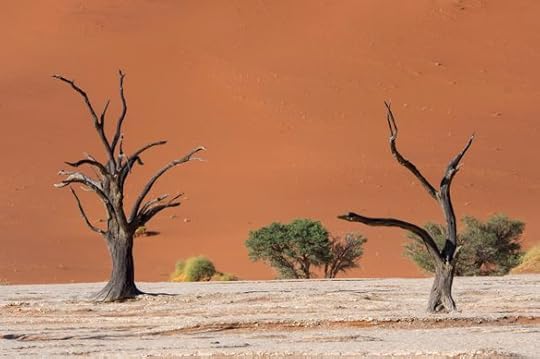
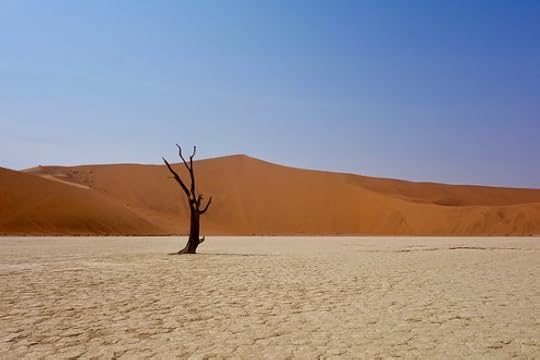
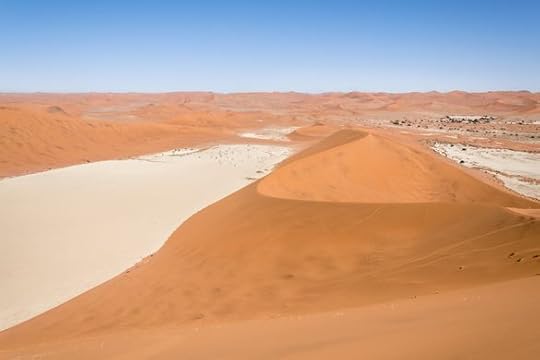
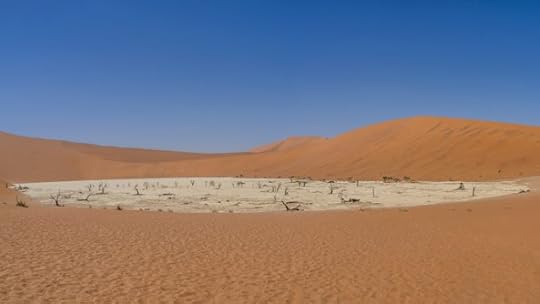
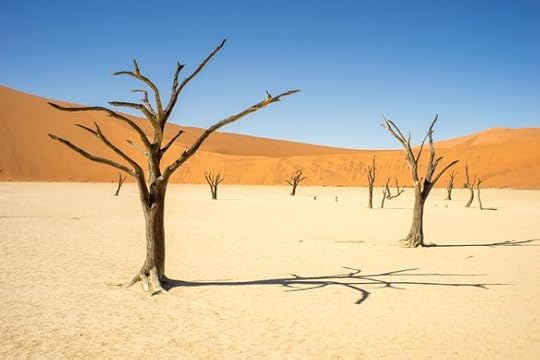
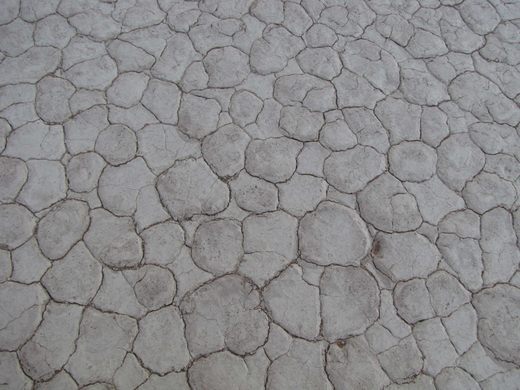
Nearby is yet another “place of no return” this one even older, and much more dead than Sossusvlei. Known as Dead Vlei or “dead marsh” (vlei being Afrikaans for a type of marsh), it is found among the tallest dunes in the world—some reach 1,312 feet high, which is almost as lofty as the Empire State Building. Dead Vlei was once like Sossusvlei, with the river draining into it nourishing desert life and even trees. But no longer. Some 900 years ago the climate dried up, and dunes cut off Dead Vlei from the river.
It became too dry in Dead Vlei for the trees to even decompose. They simply scorched black in the sun, monuments to their own destruction. The trees, now over 1000 years old, form a barren forest. The area, however, is not entirely without life. Salsola shrubs and clumps of Nara melon stay alive by subsisting off of morning mists.
It is a 44-mile drive from the park gates to the dunes of Sossusvlei and Dead Vlei. One of the many reasons to go is to experience the sunrise (or sunset) over the huge red sand dunes of the Namib desert. The skies are among the clearest on the planet.
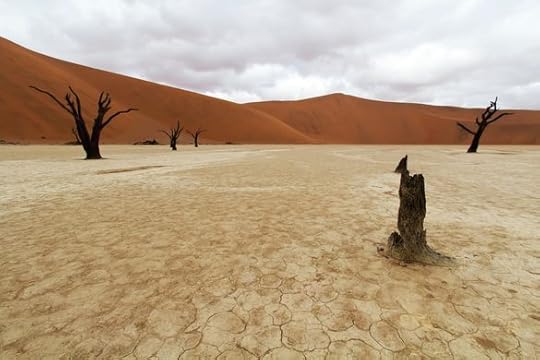
20 June 2022 - MYSTERIOUS FAIRY CIRCLES in NAMIBIA
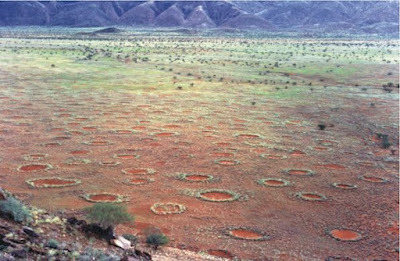
MYSTERIOUS FAIRY
CIRCLES in NAMIBIA
G'day folks,
Unexplained bald patches in the landscape grow and recede over time, as though they are somehow alive.Whether in the thickly tufted prairie grass of the southern plains or in the dry stalks of vegetation in the dusty foothills, something is happening in Southern Africa. It doesn’t really matter what the climate or soil conditions are, or who is there to see it or not, or what grazing pattern the local wildlife happens to follow. Rings are forming in the ground.
Perfectly round, almost too-good-to-be-true rings, in fact. But they are true, and they are naturally occurring, so far as anyone can tell. The small, circular patches of bare ground form like bald spots in the otherwise thick grass or fields in Namibia and South Africa, where humans often don’t set foot. Their mysterious origin has lead them to be called “Fairy Circles” colloquially, and legends ranging from local tales of god’s footprints to international recognition as a “UFO hot spot” have sprouted up in short order.

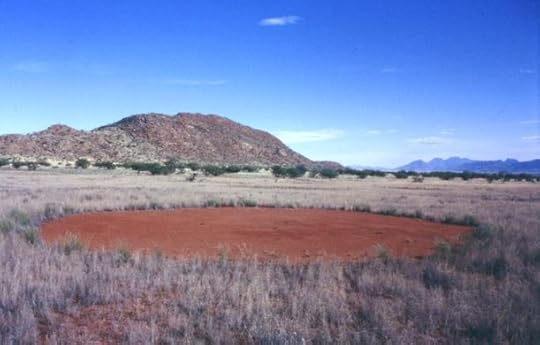
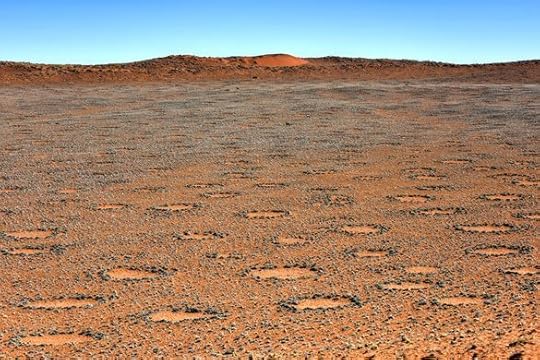
But the Fairy Circles are not grand designs like their distant paranormal cousins, crop circles, and bona fide scientific research has led to the conclusion that not only do they occur naturally, but they grow and shrink over time, as if they were alive. Examination of the soil in and around the circles reveals no abnormal insects or parasites, no unusual fungus to speak of. All science has discovered thus far is that they’re not a hoax.
Popular hypotheses about their cause include mold or spores that kill off the grass, the radiating pattern of growth of which would certainly explain the odd circular shape; or wind or soil erosion, which would do less to explain the patterns but has been observed elsewhere and found to cause “bald spots.”
For now, the odd formations are both intriguing and entertaining to nearby residents as well as botanists and UFO enthusiasts the world over. For all the predictable supernatural talk about the Fairy Circles occupying, representing or otherwise creating a path to another world, they do in fact occupy a strange and unreal dimension—that rare place and time after which a phenomenon has been discovered, but before it is blandly explained away like so many lights in the sky. For now, the only certainty is the mystery.
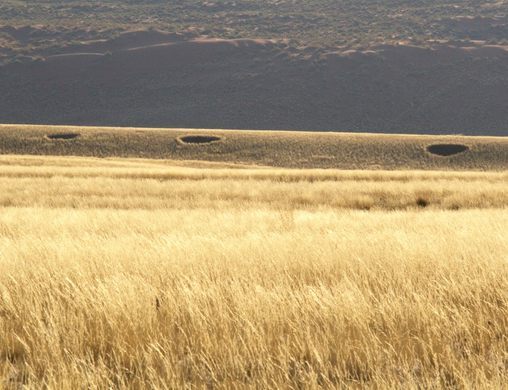
April 28, 2022
19 June 2022 - THE ROUTE OF FACES - SPAIN
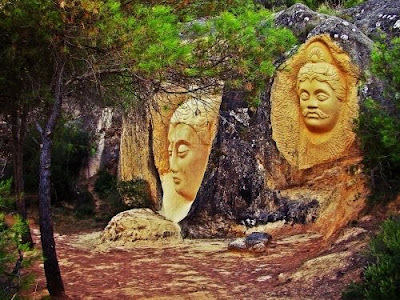
THE ROUTE OF FACES
- SPAIN -
G'day folks,
Numerous sculptures set along hiking trails symbolize and idealize the relationship between man and nature in Spain.Intricate faces sculpted into the natural facade of the environment merge with the already-beautiful and symbolic landscape of the swamps of Buendia in a place known as the Ruta de las Caras. The name translates to “Route of the Faces,” where a series of hiking trails or “routes” take visitors along a cultural and artistic journey of spiritual discovery.
The Buendia swamps are thick with dense pine forests and sandstone rock, into which some 18 sculptures and bas-reliefs have been carved. Several artists have combined over the years to create the impressive collection, which features works ranging from 1 to 8 feet high.
Art and nature lovers alike come from miles away to enjoy these sculptures, which break the bounds of traditional museums and leave more commonly artistic urban areas behind for the quiet serenity of the forest. The art serves to explore and magnify the deeply complementary relationship between sculpture and nature, forth both artist and viewer.
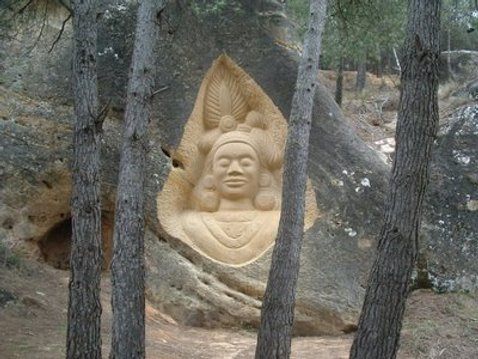
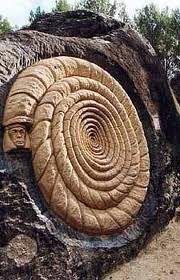


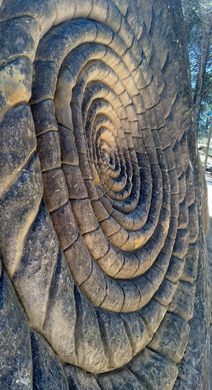
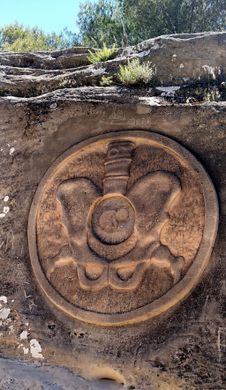
Reflection on this symbiosis is enhanced by the spiritual nature of the art, as the faces have a mystical-religious meaning. The concept of human forms written onto natural contexts, fully integrated into sandstone in this case, is a notion deeply rooted in the human condition. Cultures have always considered our relationship with the wider world by trying to integrate the two, often through artistic sculpture, found all the way from Pharaonic Egypt to these modern-day statues.
Buendia, Spain is a municipality in the province of Cuenca, near Madrid. This was a perfect location for such a sculpture park, as Cuenca and Guadalajara already offered an ideal environment for hiking. Hiking trails include some for children, taking over 1 scenic hour to complete but having a lower difficulty as hikes go, and flanked by unique artwork all along the way.
For the more advanced, the Buendía swamp and other nearby trails along the Sierra de Altamira offer long-distance views and lovely scenery. Some of these trails are developed to connect the town directly with the Route of the Faces, surrounded by the incomparable landscape of the Sea of Castile, which in times of drought is more like a swamp. In either case, the landscape offers waterways where one can practice watersports, sailing, jet skis, motorboats, fishing and even bathe in its waters, as so many locals do on their way to end from enjoying the faces oddly, yet comfortingly, set in stone.
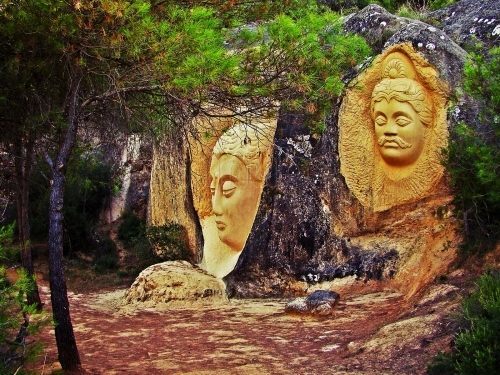
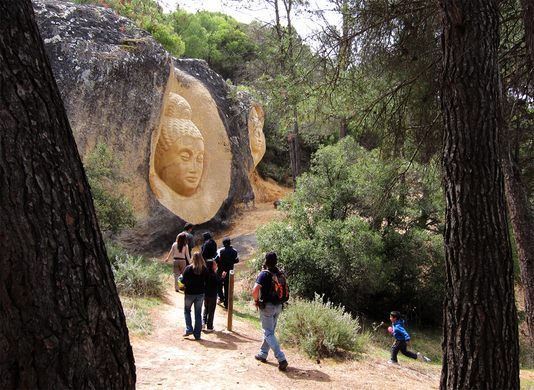
16 June 2022 - THE JESUS TREE in MALTA
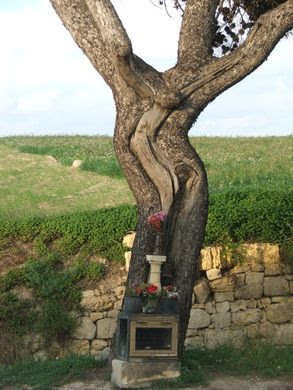
THE JESUS TREE
in MALTA
G'day folks,
The Jesus tree of Malta bears a striking resemblance to Christ on the cross.According to Maltese legend, a local tree was struck by lightning many years ago, and changed in appearance. Its contorted bark metamorphosed into an image of Jesus hanging from the cross.
Although the Catholic Church officially recognizes miracles, it has declared that these types of apparitions are no longer worthy of “public revelation.”
The issue of public vs. private revelation has been a contentious one for the Church, but was recently clarified by the current pope, Joseph Ratzinger. Ratzinger declared that public revelations (essentially big, flashy miracles), ended with the death of the last living Apostle in 100 A.D.
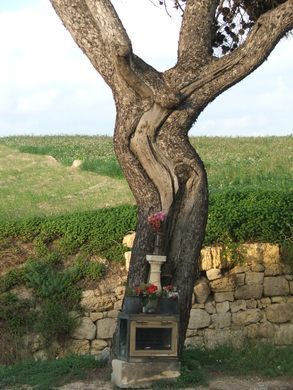

Apparitions, even though officially recognized by the church, are now deemed to be “private revelations,” which means one doesn’t have to believe in them. Such revelations are binding on whoever has them, but not upon all Catholics.
Of course, for non-believers the tree is neither public nor private revelation, but rather an example of the psychological phenomenon of pareidolia, the perception of meaningful significance in a meaningless, random stimulus. Regardless of religion, these sorts of images of Jesus, Mary, the name of Allah, or a Singaporean monkey god, continue to appear in the oddest of places, and to intrigue the faithful.
The Jesus Tree of Malta is located right off the main road from Zebbug to the walled city of Mdina, the former home of the Knights Hospitalier.
